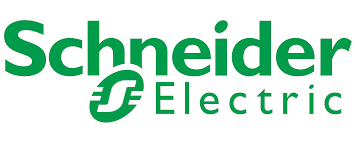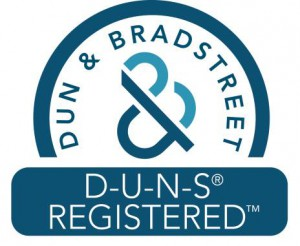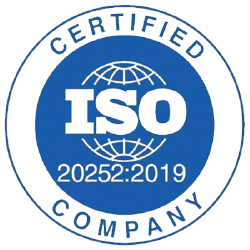Pagina aggiornata :
Jul 2025
INTRODUZIONE AL MERCATO L'isosorbide è un composto chimico biciclico che appartiene al gruppo dei dioli e degli eterocicli contenenti ossigeno, che contiene due anelli di furano fusi. Il materiale iniziale per l'isosorbide è il D-sorbitolo che deriva dall'idrogenazione catalitica del D-glucosio, che si forma mediante idrolisi dell'amido. L'isosorbide è fondamentalmente un derivato chimico di origine vegetale in grado di produrre derivati biodegradabili per diverse funzioni. L'isosorbide, come ingrediente medico, funziona come un diuretico e viene utilizzato nel trattamento di malattie come il glaucoma e l'idrocefalo. I derivati dell'isosorbide come dinitrati e mononitrati sono utili nel trattamento delle malattie delle arterie coronarie come l'angina pectoris. DINAMICHE DEL MERCATO Il mercato dell'isosorbide è in crescita a causa della crescente consapevolezza ambientale tra i consumatori e dei progressi tecnologici nel settore. Si prevede che il cambiamento nello stile di vita e nelle preferenze dei consumatori nei confronti delle bioplastiche, guidato dalla maggiore consapevolezza dell’uso di prodotti ecologici, alimenterà ulteriormente la crescita del mercato dell’isosorbide nei prossimi anni. Si prevede inoltre che il crescente utilizzo dell’isosorbide negli elastomeri e nei polimeri darà impulso al settore. La crescita del mercato delle bioplastiche, unita allo sviluppo tecnico e al supporto normativo, spingerà probabilmente i produttori ad aumentare la capacità di produzione di isosorbide. Serve per il mercato dei materiali termoplastici in cui sono richieste prestazioni ad alta temperatura, che comprende contenitori rigidi e bottiglie per applicazioni di riempimento a caldo, supportando così la crescita del settore. Tuttavia, gli effetti collaterali dei derivati dell’isosorbide potrebbero ostacolare la crescita del mercato dell’isosorbide. AMBITO DI MERCATO L'"Analisi del mercato globale dell'isosorbide fino al 2031" è uno studio specializzato e approfondito del settore alimentare e delle bevande con particolare attenzione all'analisi delle tendenze del mercato globale. L’obiettivo del rapporto è fornire una panoramica del mercato isosorbide con una segmentazione completa del mercato per applicazione, uso finale e area geografica. Si prevede che il mercato isosorbide assisterà a una crescita elevata durante il periodo di previsione. Il rapporto fornisce statistiche chiave sullo stato del mercato dei principali attori del mercato isosorbide e offre tendenze e opportunità chiave nel mercato. SEGMENTAZIONE DEL MERCATO Il mercato globale dell'isosorbide è segmentato sulla base dell'applicazione e dell'uso finale. In base all’applicazione, il mercato è segmentato in polietilene isosorbide tereftalato (PEIT), policarbonato, poliuretano, poliisosorburo di poliestere, diesteri di isosorburo e altri. In base all’uso finale, il mercato è segmentato in Resine e Polimeri, Additivi e Altri. QUADRO REGIONALE Il rapporto fornisce una panoramica dettagliata del settore, comprese informazioni sia qualitative che quantitative. Fornisce una panoramica e previsioni del mercato isosorbide in base a vari segmenti. Fornisce inoltre stime sulle dimensioni del mercato e sulle previsioni per l’anno dal 2021 al 2031 rispetto a cinque regioni principali, vale a dire; Nord America, Europa, Asia-Pacifico (APAC), Medio Oriente e Africa (MEA) e Sud America. Il mercato isosorbide in ciascuna regione viene successivamente suddiviso in sottosegmenti in base ai rispettivi paesi e segmenti. Il rapporto copre l’analisi e le previsioni di 18 paesi a livello globale insieme alla tendenza attuale e alle opportunità prevalenti nella regione. Il rapporto analizza i fattori che influenzano il mercato dell’isosorbide sia dal lato della domanda che dell’offerta e valuta ulteriormente le dinamiche di mercato che influenzano il mercato durante il periodo di previsione, ovvero fattori trainanti, restrizioni, opportunità e tendenza futura. Il rapporto fornisce anche un'analisi PEST esaustiva per tutte e cinque le regioni, vale a dire; Nord America, Europa, APAC, MEA e Sud America dopo aver valutato i fattori politici, economici, sociali e tecnologici che influenzano il mercato dell’isosorbide in queste regioni. ATTORI DI MERCATO I rapporti coprono gli sviluppi chiave nel mercato dell'isosorbide come strategie di crescita organiche e inorganiche. Diverse aziende si stanno concentrando su strategie di crescita organica come lanci di prodotti, approvazioni di prodotti e altri come brevetti ed eventi. Le attività delle strategie di crescita inorganica testimoniate nel mercato sono state acquisizioni, partnership e collaborazioni. Queste attività hanno aperto la strada all'espansione del business e della base clienti degli operatori del mercato. Si prevede che i contribuenti del mercato dell’isosorbide avranno opportunità di crescita redditizie in futuro con la crescente domanda di isosorbide nel mercato globale. Di seguito è riportato l'elenco di alcune aziende impegnate nel mercato dell'isosorbide. Il rapporto include anche i profili delle principali aziende insieme alle loro analisi SWOT e strategie di mercato nel mercato isosorbide. Inoltre, il rapporto si concentra sui principali attori del settore con informazioni quali profili aziendali, componenti e servizi offerti, informazioni finanziarie degli ultimi 3 anni e lo sviluppo chiave degli ultimi cinque anni.
- Roquette Frères ADM Cargill, Incorporated Novafene Mitsubishi Chemical Corporation Prodotti chimici SK Par Farmaceutico Ecogreen Oleochemicals GmbH Alfa Aesar, Thermo Fisher Scientific J&K Scientific Ltd
- Analisi storica (2 anni), anno base, previsione (7 anni) con CAGR
- Analisi PEST e SWOT
- Valore/volume delle dimensioni del mercato - Globale, Regionale, Nazionale
- Industria e panorama competitivo
- Set di dati Excel
Report recenti
Testimonianze
Motivo dell'acquisto
- Processo decisionale informato
- Comprensione delle dinamiche di mercato
- Analisi competitiva
- Analisi dei clienti
- Previsioni di mercato
- Mitigazione del rischio
- Pianificazione strategica
- Giustificazione degli investimenti
- Identificazione dei mercati emergenti
- Miglioramento delle strategie di marketing
- Aumento dell'efficienza operativa
- Allineamento alle tendenze normative
I nostri clienti






























Assistenza vendite
US: +1-646-491-9876
UK: +44-20-8125-4005
Email: sales@theinsightpartners.com
Chatta con noi

87-673-9708

ISO 9001:2015



 Ottieni un campione gratuito per - Mercato dell'isosorbide
Ottieni un campione gratuito per - Mercato dell'isosorbide